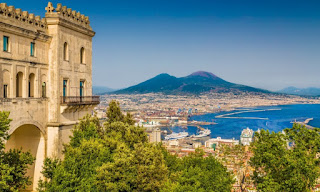Living in
Bangalore and with family in Chennai, the Bangalore-Chennai trips was something
I did often; but usually by the Shatabdi.
Recently, a last minute programme during Christmas had me doing the
onward by bus and return by Brindavan Express as nothing else was available.
I may have
done this journey during my college days, but have forgotten it in the annals of
time and upgraded train journeys and discounted flights, so was in for a rude
shock. I had pictured the 2nd
class sitting as the one with the usual compartment layout, but with a luggage
rack above instead of the berths; was taken aback at the suburban train (local
train) layout. And was soon for a bigger shock when I saw that a reserved
compartment held no such pretentions as people thronged in at every station and
occupied every standing and sitting position, including the floor space in
front of the bathrooms.
Squished
between the open window (thank god for a window seat) and a rather corpulently
endowed lady on the other left me little wiggle room for comfort. A barely 6 ft
long x 11/2 feet broad thinly cushioned seat was to hold 3 people; it held 4. Bags and baggage liberally occupied the 1
feet leg space between my seat and the one opposite, hung from hooks and the
narrow luggage rack above and squeezed into every nook and cranny available. All in all it was cosy, euphemistically
speaking.
But once I
looked beyond the discomfort, I started taking in the cacophony of life around
me – pulsating, animated, and effervescent – something that one would never
find in the almost sterile cocoons of the air-conditioned shatabdis. Idlivadaipongaaal sellers reminded people
that the train had no pantry cars. I must admit that the leaf and paper wrapped
packages of the south Indian staple breakfast did look a lot more appetising
than the affectations of an English breakfast with plastic wrapped slices of
bread and little packets of butter and jam that is served in Shatabdis.
The jamboree
started in earnest an hour into the ride. Roasted groundnut sellers raised
octave in synchronisation with hot ginger cardamom tea sellers. The childrensbooks-colouringbooks-moralstorybooks-numberbooks
seller, who intoned his wares in the same order and tune every time had parents
perking in interest; the children preferred the nodding doggies and ingenuously
put together plastic helicopter drones. Mobile holder stands, earphones,
chargers I hues and variety of shapes added to the melee.
The blind
and handicap singers duo was not far behind – their repertoire was truly eclectic
– effortlessly moving from Hindi to Tamil to Kannada. A single clap, a defiant
stare and a synchronised thrust of a bony hip and outstretched hand that demanded
attention and remuneration had people scrabbling for the scarce loose change in
the times of demonatisation, to appease the transgenders; non-payment would
have earned a tongue lash and wrath in equal
measures. Somebody brought in
shallots to sell. Why would someone buy shallots on a train!! The mami in
madisara thought it as a good idea, and so did the couple with 3 kids in tow. Shallots
were followed by green cooking bananas. The combination I must admit is mouth
wateringly appetising; guess the ones who bought it thought so too.
Once again, I
was flummoxed at why someone would need to buy purple kanakambarams (firecracker flower) in the train. Why ever
not seems to be the repartee. Traditional
South Indian ladies do love flowers in their hair.
At rupees 150/-
not only could I travel 350 kms from Chennai Central to Krantivira Sangolli
Rayanna railway station in Bangalore, I wasn’t bored for a single
second. There was drama, entertainment, music all packed in a 7 hr (yes, the
train is invariably late) capsule.
And it has
done so for 53 years now. The Brindavan Express train was introduced in 1964 as
the first intercity express in the southern Railways.
I guess the
Brindavan Express is going to feature more in my travels. Trains especially the
day journeys are certainly alluring - they pack in so much more than just
getting one from point A to point B. It’s the epitome of travel romance – next
up, a day bus journey.

































